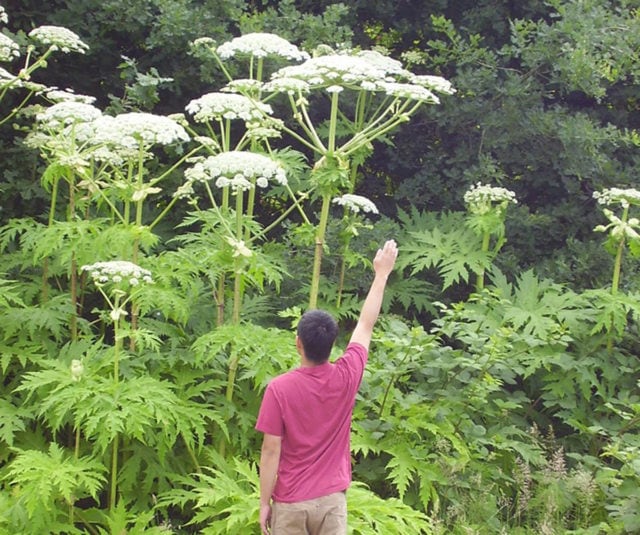B.C. man cautions against common but toxic plant after exposure caused temporary vision loss
Giant hogweedan invasive,noxious weed; in B.C., it's commonly in the South Coast, Vancouver Island

With spring right around the corner, a B.C. man is warning others about giant hogweed, a highlytoxicplant that left him with temporary vision loss and covered in massive, burningblisters.
Giant hogweedis an invasive,noxious weed and in B.C., found mostly in parts of the South Coast and Vancouver Island. It has been observed in Atlantic Canada, Quebec, Ontario and appears to be spreading, according to Nature Conservancy Canada.
"This is a hellish plant.Itis as hellish as they come," said Don Pollack, who came into contact with hogweed in May 2021.
Pollack49,says he was cyclingthrough theBurnabygreenbelt areawhen he passedthrough a "plume of pollen" from an overgrowth of the weedhanging over the trail.
"By the timeI got to southwest Marine Drive I was completely snow blind. I could not see," he said. "It was white, piercing light."

Giant hogweedgrowsthreeto fourmetres in height and thrives near streams, creeks andditchesand when in bloom, carries numerous small, white flowers that form an umbrella shape.
It is an undesirable invader due to its large size, prolific seed production and vigorous growth, according to the Invasive Species Council of B.C.
The highly toxic sap is contained within the leaves and stems and can cause hypersensitivity to sunlight, that resultsin burns, blisters,scarring and in extreme situations, temporary vision loss.
Pollack said he spent an anxious45 to 60minutes sitting on a curb until his vision gradually recovered enough for him tomake the four-kilometre walk home with his bike.
"By evening I could see blisters starting to form on the sides of my abdomen," he said, adding that the toonie-sizedsacs quickly made their way onto his head,neck and ankles.
"One had popped, and Iabsolutely noticed it because it soaked my sock, that's how big the blisters were," he said.
4 months for symptoms to subside
Pollack says he visited several medical clinics and an allergist and while he was prescribed antibiotics and antihistamines, the doctors he visited couldn't diagnose the problem. It eventuallytook more than fourmonths for his symptoms to subside.
The answer came last January, when he inadvertentlycame across a YouTube clip of crews removinghogweed from a field.
"They were removing what Ihad rode through on my bike. They were in hazmat suits and safety vehicles that they were vacuuming up these trees. AndI'm thinking, 'I rode directly through that.'"

Gail Wallin, executive director of theInvasive Species Council of B.C., says calls to her office increase in spring after people have come into contact with the plant, and are unsure what caused the blistering and other rare symptoms, like temporary vision loss.
"You may not know it right away, people don't make the connection," Wallin said."You may have had sap on you from two days agoand you go outside and all at once your skin starts to burn."
She says gardening enthusiastsand landscapers are responsible in part for the proliferation of the weed, because of its ornamental value.
"It's large, it's impressive. But in areas where it grows, it takes over the entire habitat and nothing else can grow underneath it," Wallin said.
The council asksgardeners not to buy, trade or grow giant hogweedor its seeds and urges extreme caution with its removal.
"Either hire a professional, or carefullyfollow the instructions on our website," said Wallin.
To dispose of hogweed, the Invasive Species Council says:
- Wear proper protective gear from head to toe.
- Bag or tarp manuallyremoved plants, plant parts and seeds before transporting to a designated disposal site, like a landfill or transfer station.
- Wash vehicles, including tires and undercarriage, and equipment at designated cleaning sites before leaving infested areas.
"Make sure you do not get it into a bin for composting. You want to make sure it goes into the landfill or whatever your local government uses," Wallin said.
At a minimum, Wallin suggests those growinghogweedin their gardensremove the seeds after they've formed in June and Julyto reducethe risk of additional plants growing on the property and beyond.
People who seethe invasive speciesin their community are also askedto report itonline.












_(720p).jpg)


 OFFICIAL HD MUSIC VIDEO.jpg)
.jpg)



























































































